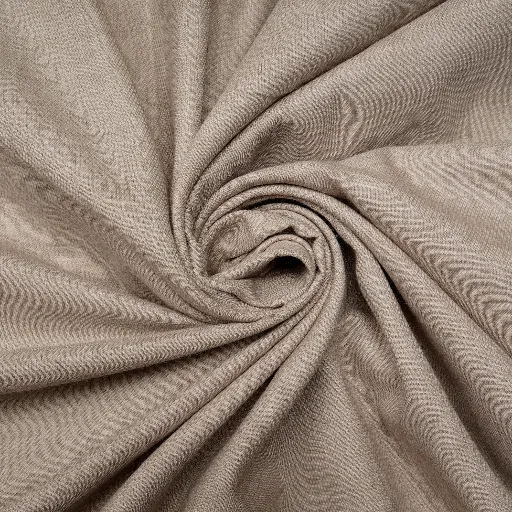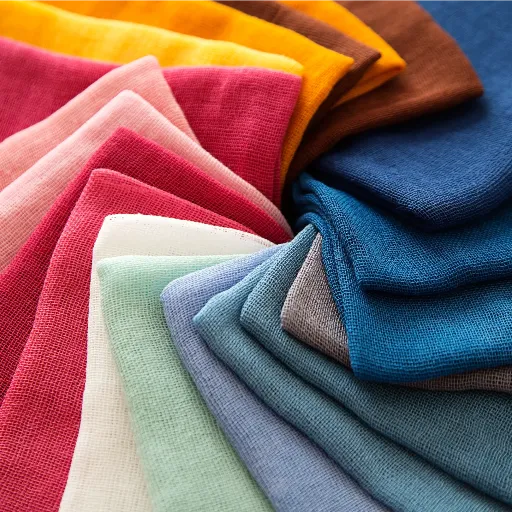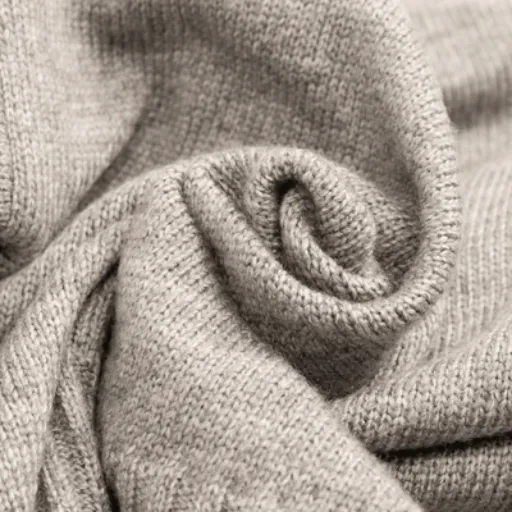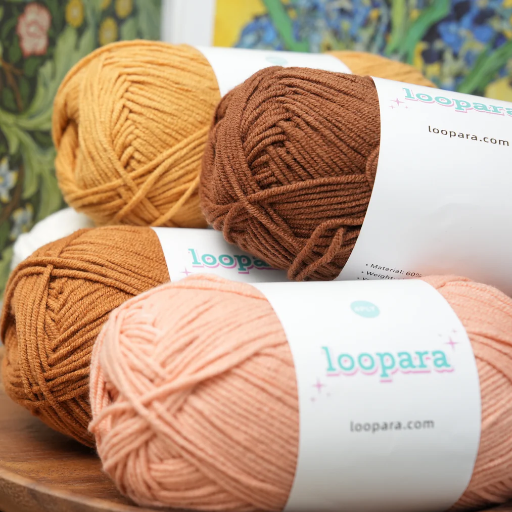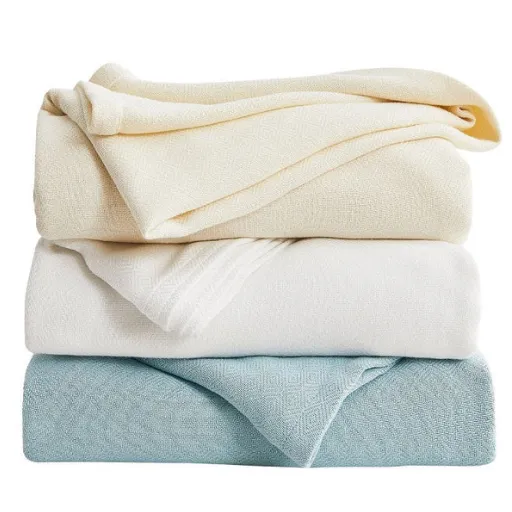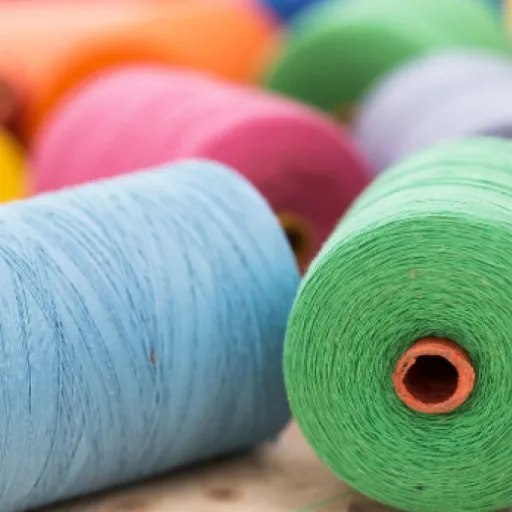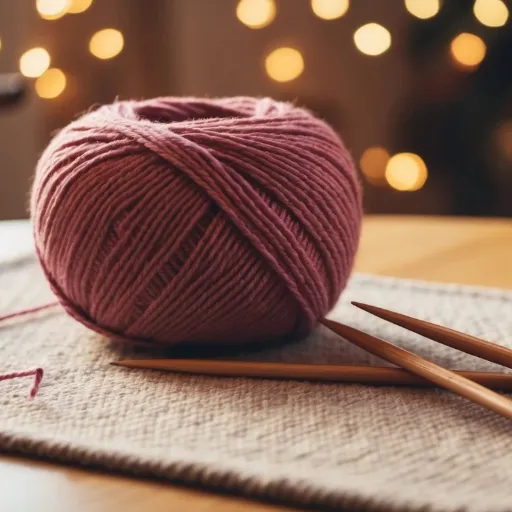Acrylic yarn is an essential material in the craft world, admired for its low price, great range of applications, and bright colors. However, did you ever stop and think about the actual composition of acrylic yarn and its distinction from natural fibers such as wool or cotton? This paper reviews the synthetic character of acrylic yarn, disclosing the science and production techniques that lie behind it. If you are a veteran craftsman or a beginner who is just curious, knowing the ingredients of acrylic yarn would be beneficial for making project decisions and contributing to the broader debate around synthetic materials used in the textile industry. Follow us as we investigate this incredible fiber and its impact on the new era of crafters.
What is Acrylic Yarn?
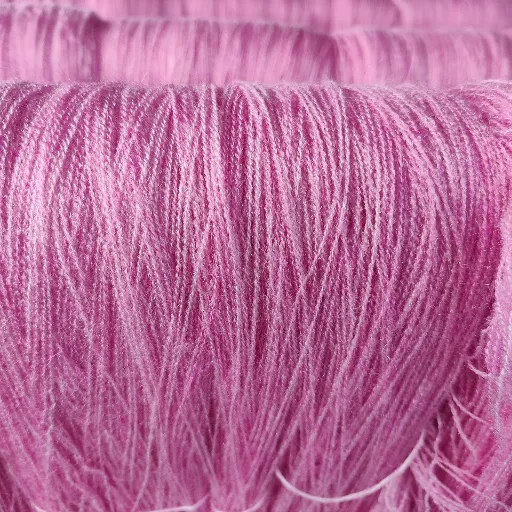
Acrylic yarn is classified as a synthetic fiber that is manufactured from polymers made with either petroleum or natural gas. This method of production is called polymerization, and the principal ingredient is acrylonitrile, which is converted into lasting and strong filaments. Besides being lightweight and soft, acrylic yarn is very inexpensive, which is why it is widely used in many crafts like knitting and crocheting. It is also preferred for its easy maintenance, moth resistance, and the variety of colors and textures offered.
Overview of Its Synthetic Nature
Acrylic yarn is a fully synthetic fiber, produced through the complex intervention of chemical processes. Acrylic, unlike natural fibers such as wool or cotton, primarily originates from petrochemicals through the polymerization of acrylonitrile, making it a product of modern industrial developments. It retains the property of being less breathable than its synthetic counterparts; however, it manages to take the lead over other fiber types in versatility, price, and durability. Recent survey reactions have highlighted a renewed interest in acrylic yarns, as indicated by their high search data. This interest is often associated with DIY and crafting enthusiasts and is attributed to their low prices and the wide range of fashion styles they offer. The synthetic composition has made it possible to ensure uniformity and consistency that is hard to achieve with naturals, thereby making acrylic yarn suitable for both mass production and customized projects.
Comparison with Natural Fibers
Natural fibers like wool and cotton, acrylic yarn, and, in this case, the comparison between them involves several factors. Acclaimed for its low price and high durability, acrylic yarn has reflected the upsurge in search trends, especially among crafters. In contrast to natural resources, synthetic yarn simply does not wick off moisture. However, it is still very light and easy to clean, which makes it highly practical for many projects. On the other hand, the eco-friendly, breathable, and soft character of natural fibers is still their main advantage, though the latter two are less stressed in the recent data. Furthermore, the growing demand for sought-after sustainable products has put natural fibers at the forefront of the green advocates, as they do not harm the environment. In the end, it all boils down to project requirements and personal values, which can be ascertained from the ongoing digital public discourse.
How is Acrylic Yarn Made?
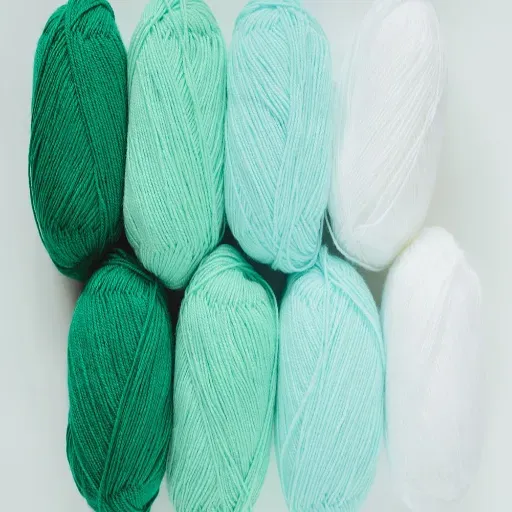
To make acrylic yarn, a synthetic polymer known as acrylonitrile is used as the main component. The first step involves creating this polymer, which is made through a chemical reaction of petroleum or natural gas derivatives. After the polymer is formed, it is dissolved in a liquid, and then fine strands are made by forcing the liquid through tiny openings. The strands are turned into fibers by cooling and then made into yarn through spinning. At the end, the yarn is colored and processed to achieve the intended texture and hue. Because of the method used, acrylic yarn can be made in a wide range of weights, textures, and colors, making it a good option for both handicrafts and textile projects.
Polymerization of Acrylonitrile
Acrylonitrile polymerization is a chemical process where acrylonitrile monomers are connected into long polymer chains, mostly via free radical polymerization. This process uses peroxide compounds as initiators to start the reaction. In the recent past, the focus of the research has been on making this process more energy-efficient and overall more efficient. The studies in this area show that sustainable practices, such as the use of non-toxic catalysts or the implementation of recycled materials in the production process, are aligned with the environmental goals set by this particular industry. Polyacrylonitrile produced is of utmost importance in the manufacture of a wide range of products, from soft acrylic fibers for clothing to the very high-performance carbon fiber used in the fields of engineering and aerospace.
Spinning the Polymer into Fibers
Spinning polyacrylonitrile (PAN) into fibers is a process that involves the conversion of the polymer into a format that is usable and functional. To start with, PAN is dissolved in a proper solvent to create a thick solution called a polymer dope. This solution is then forced through a spinneret, essentially a tool with tiny holes, to produce fragile filaments. Depending on the application and the required properties of the fiber, these filaments are solidified by either dry spinning or wet spinning techniques. The fibers that are formed can be treated further, such as through stretching and heat stabilization, to improve their strength, durability, and specific performance characteristics. Manufacturers can produce high-quality fibers for both textile and industrial applications by refining every stage of the spinning process, a critical factor in fiber production.
Characteristics of Acrylic Yarn
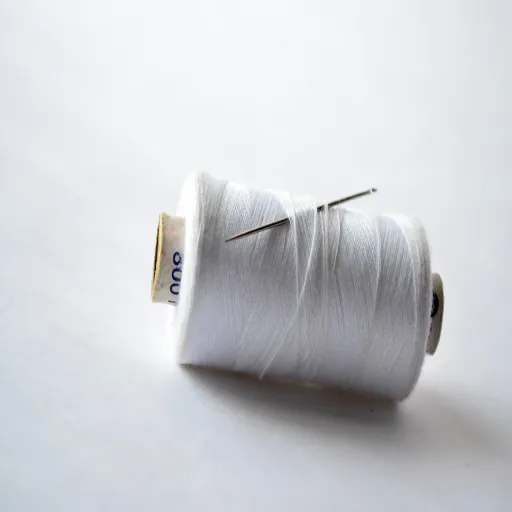
- Lightweight: Among all the traditional fibers, acrylic yarn is the lightest, making it very easy to work with and suitable for many different applications.
- Soft Texture: It is smooth on the skin, making it perfect for creating garments and accessories.
- Durable: Acrylic yarn not only seems strong, but it is also so strong that, even over time, it will still produce good quality products.
- Color Retention: Acrylic yarn is a champion when it comes to holding colors, thus giving you bright and long-lasting shades.
- Affordable: The price of acrylic yarn is very low compared to natural fibers, making it the most preferred choice for cost-effective projects.
- Moisture-Wicking: Since it does not absorb moisture, you can say it is quick-drying and resistant to mold.
- Easy Maintenance: Care for acrylic yarn is simple since it can be washed in a machine, making it convenient for daily use.
Lightweight and Soft Texture
Acrylic yarn is famous for its lightweight and soft texture, making it the most comfortable material for many projects, from warm sweaters to delicate baby clothes. Its low price doesn’t mean it lacks the feel of natural fibers like wool, but it is still much lighter. All these characteristics make acrylic yarn a great all-purpose option for crafters who want to prioritize comfort while not sacrificing durability or style. The gentle texture of the yarn makes it soft enough for the skin, making it suitable for people who are allergic to some natural fibers.
Durability and Resistance to Wear
Acrylic yarn has earned a reputation for its remarkable strength and wide-ranging applications, making it a perfect option for projects with longevity in mind. Unlike some natural fibers, acrylic yarn has the highest resistance to moth damage and does not pill or fray easily, even with repeated use, making it last longer. While its synthetic nature is a disadvantage for the most part, it also has the advantage of being able to bear regular washing and still keep its shape even under harsh use, which is a plus factor for items like blankets, scarves, and everyday garments that need both strength and durability. Moreover, the colorfastness of acrylic yarn means that the bright colors do not fade easily, even after several washes, making it a dependable choice for long-lasting projects.
Environmental Considerations
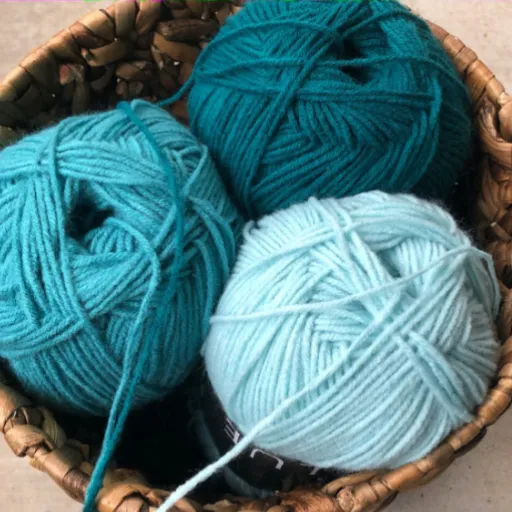
Acrylic yarn is a synthetic fiber made from petrochemicals, so it has significant environmental drawbacks. The production of acrylic fiber not only involves non-renewable resources but also results in the emission of greenhouse gases. Furthermore, acrylic yarn cannot be broken down by natural processes, which means it will take a long time to decay in landfills. Another issue is that washing can release microplastics, which may end up in rivers and thus worsen the problem of water pollution. Even though it is a durable and versatile material, its environmental impact makes it necessary to be careful in its use and to consider sustainable options.
Synthetic and Petroleum-Based Nature
The usage of synthetic materials, especially those derived from fossil fuels, has drawn much attention lately because of their damaging effects on the environment. Recent studies claim that the manufacture and application of these materials are major contributors to global warming, pollution, and the consumption of natural resources. For instance, acrylic fibers are notorious for polluting water bodies with microplastics, caused by their shedding in the washing machine; this is an increasing problem for the aquatic ecosystem and water quality. On the other hand, the research is being diverted towards alternatives like bio-based plastics and reconstituted plastic fibers. The innovations in synthetic materials have come a long way, so fossil fuels will not be needed anymore. The environment will not suffer from synthetic materials to the same extent, thereby allowing the industry to create more earth-friendly products.
Recycling and Eco-Friendly Alternatives
Recycling and the use of eco-friendly materials are of utmost importance in reducing environmental impact, and their contribution cannot be overlooked. Recycling is the conversion of waste materials to new products, and this process reduces not only the amount of waste in landfills but also the consumption of natural resources and energy. For example, recycling aluminum saves as much as 95% of the energy that is otherwise used to create it from the raw materials. Innovative textile recycling is one way to repurpose old fabrics into new garments, thus reducing the demand for virgin fibers.
The use of eco-friendly substitutes such as compostable packaging, reusable items, and biodegradable substances further supports recycling activities. Recent trends show that consumer interest in sustainable products is increasing, as evidenced by the significant rise in searches for “zero-waste products” and “biodegradable materials”. The combination of these practices presents a way to a circular economy that works to reduce waste and enhance sustainability worldwide.
Applications of Acrylic Yarn
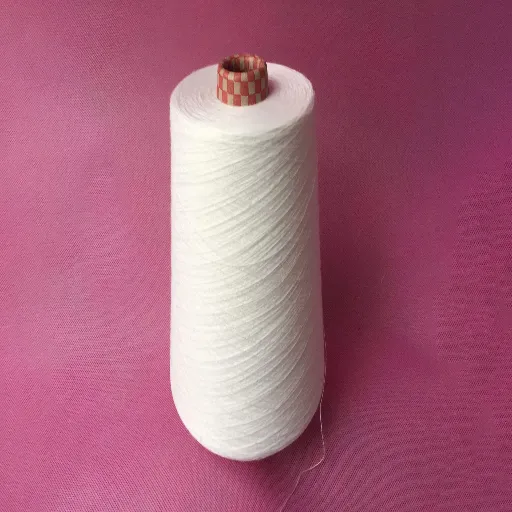
Acrylic yarn is a popular material that has many different applications due to its versatility and low cost. Besides knitting and crocheting projects, it is often used in making soft, lightweight, and colorful items like sweaters, scarves, blankets, and hats. In addition to garments, it is also used for home decoration items such as cushions, rugs, and throws. Its properties of being durable and easy to clean make it a perfect choice for craft projects that need to be both functional and visually appealing.
Common Uses in Knitting and Crocheting
The main reason for the widespread use of acrylic yarn is its pricing, versatility, and user-friendliness, which together make it a top option for both beginner and professional artisans. The statistics indicate that the unique quality of acrylic yarn, available in a wide range of colors and textures, allows makers to exceed budget constraints while being creative with their work. Moreover, the lightness of the yarn, combined with its hypoallergenic characteristic, makes it suitable for various clothing items like scarves, hats, and gloves without causing discomfort for people with sensitive skin. The washing machine-friendly design and mildew resistance enhance its existing qualities, making it suitable for long-lasting and everyday items like baby blankets and home décor that require frequent washing. All these aspects are responsible for simultaneously increasing the popularity of acrylic yarn in crafting circles worldwide.
Versatility in Textile Applications
Acrylic yarn has always been a remarkably versatile material in textile applications and has gained my heart over time. I have made numerous things like warm sweaters and colorful home decor with it, and still, its flexibility astonishes me. It is an excellent choice for many creative projects because of its wide range of colors, textures, and durability.
Reference Sources
Here are three authoritative academic sources that can help verify the correctness of your article on “What is acrylic yarn made of?”:
From Fiber to Fabric: Acrylic – Hosted on DigitalCommons@USU, this source provides historical and material insights into acrylic fibers, including their development and properties.
Orlon Acrylic Fibers – This page from Florida State University’s Olympus MIC-D gallery discusses the development of Orlon, a synthetic acrylic fiber, and its material characteristics.
Fiber Types | Textiles – Published by the University of Georgia Extension, this resource explains various fiber types, including acrylic, and their applications in textiles.
Frequently Asked Questions (FAQs)
What materials are used to make acrylic yarn?
Acrylic yarn is made primarily from polyacrylonitrile, a synthetic polymer derived from petroleum-based chemicals. This material is known for its durability and versatility, making it a popular choice among knitters and crocheters alike.
What are the advantages of using acrylic yarn?
Acrylic yarn offers several advantages, including its affordability compared to natural fibers like wool and cotton. It is also lightweight, soft, and easy to care for, making it suitable for large projects like blankets. Additionally, acrylic yarn is available in a wide range of colors and textures.
Are there any disadvantages to acrylic yarn?
While acrylic yarn has many benefits, there are some cons to consider. It may not have the same softness or breathability as natural fiber counterparts like merino wool or cashmere. Acrylic yarn can also be less eco-friendly due to its petroleum-based production processes.
Can acrylic yarn be blended with other fibers?
Yes, acrylic yarn can be blended with other fibers, such as cotton or wool, to create acrylic blends. These blends can enhance the softness and durability of the yarn, providing a unique texture and improved performance for various knitting projects.
How does the environmental impact of acrylic yarn compare to natural fibers?
The environmental impact of acrylic yarn is often viewed as higher than that of natural fibers, primarily due to its production from petroleum-based products. However, there are recycled acrylic options available that aim to reduce the overall footprint. It’s essential to consider the entire lifecycle of the yarn when evaluating its environmental effects.
What is the softness level of acrylic yarn compared to cotton yarns?
Acrylic yarn is generally softer and more elastic than cotton yarns, making it a popular choice for beginners. However, some premium acrylic options can closely mimic the softness of cashmere, providing a luxurious feel without the high price tag.
How should one wash acrylic yarn projects?
Washing acrylic yarn is relatively simple. Most acrylic fabrics can be machine-washed on a gentle cycle using cold water. It’s advisable to avoid high heat when drying, as this can cause the yarn to lose its shape. Always check the care instructions for specific yarn brands.
What types of projects are best suited for acrylic yarn?
Acrylic yarn is ideal for a variety of projects, including knitted garments, crochet items, and large accessories like blankets. Its durability and ease of care make it a practical choice for items that will see frequent use.
Are there any alternatives to acrylic yarn?
Yes, alternatives to acrylic yarn include natural fibers such as wool, cotton, and bamboo. While these options may offer superior softness and breathability, they can often be more expensive and require more care than acrylic yarn.
Is premium acrylic yarn worth the investment?
Premium acrylic yarns are often worth the investment for those seeking higher quality and softness. These yarns can provide a more luxurious feel and are usually more durable than traditional acrylic options, making them suitable for a broader range of knitting and crochet projects.








